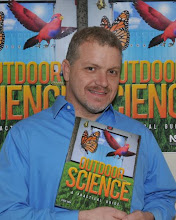

What a privilege to be part of the NSTA USA delegation to Shanghai for the organization's first ever Sino-US Science Education Forum! Hearing from Chinese education leaders gave our group perspective on the challenges they are facing, which often mirror those in the USA. Chief among those concerns is making sure that teachers are using the inquiry approach to science instruction whenever appropriate and possible.
One of the most pronounced differences of education in China and the USA is that China's central government prescribes and requires a national curriculum. In the United States, state and local choice is the rule. National documents such as Benchmarks for Science Literacy or the National Science Education Standards are widely used, but certainly not required.
Another difference is the amount of time average students spend in school and at after school academic activities. Chinese students are likely to spend much more time on their academic endeavors than most US students. It is not uncommon for school and after school programs to keep a student engaged from 8:00am until 9:00pm. While there is plenty of physical excercise and several popular sports, it seems most students are spending time preparing for the ever looming standardized test that will determine their future - which university they will attend and, based on its prestige, what the students' station in life will be.
What is most clear from my trip is that Chinese people are not afraid of hard work - academic or otherwise. The Chinese man carrying his goods above reminds me that no matter what the task - every Chinese student or teacher I met is not afraid to carry his own weight - without complaining. That's something many of us in America could work on. I for one have a renewed sense of shouldering my responsibilities without complaining and fretting. There's nothing like a trip to another country to serve as a reminder of the abundance and relative ease of life in the United States of America, and I am grateful for it.



